#saqez
Explore tagged Tumblr posts
Text
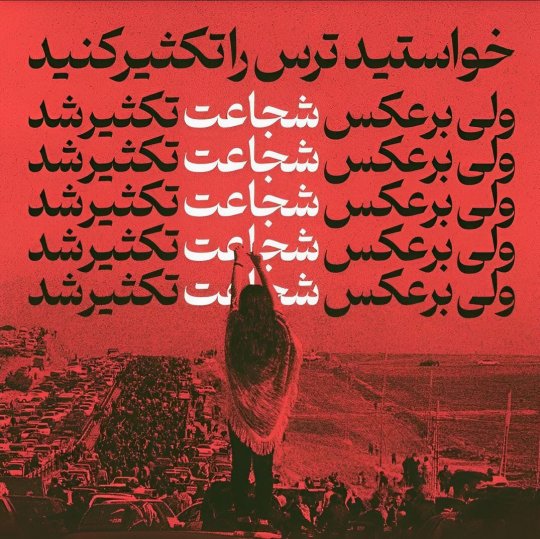
Viral photo from 2022 of many people traveling by car toward a cemetery in Saqez, the hometown of Mahsa Jina Amini, following her death. A woman shot from behind, her hair freed, raises her hands to the sky. The photo is rendered in red and white, while black and white font superimposed reads: You wanted to instill fear in us; instead, courage was instilled
Source: Twitter/ali_naseri
9 notes
·
View notes
Text
Today marks one year anniversary of 2022 Iranian uprising against the oppressive Islamic Republic regime. An uprising that started with the brutal murder of a young kurd woman, Mahsa Jina Amini, for "inappropriate hijab".
For the past couple of weeks, the regime has prepared their forces to beat down any new movement immediately. The streets of Tehran and many other cities are lined with anti riot forces and police cars. In Saqez, the home city of Amini family, they've stationed the army around the city to massacre people in case they try to start another wave of protest. Mahsa's father has been arrested alongside some family members of other last year uprising martyrs.
There has been small protesting gatherings in Iran in the last two days, there has already been some arrests and violent crackdowns on protesters. I hear people chanting from my neighborhood homes. The government would commit as many bloodbaths as it takes to secure their position, but you can't beat people into obedience when they hate you from the bottom of their hearts.
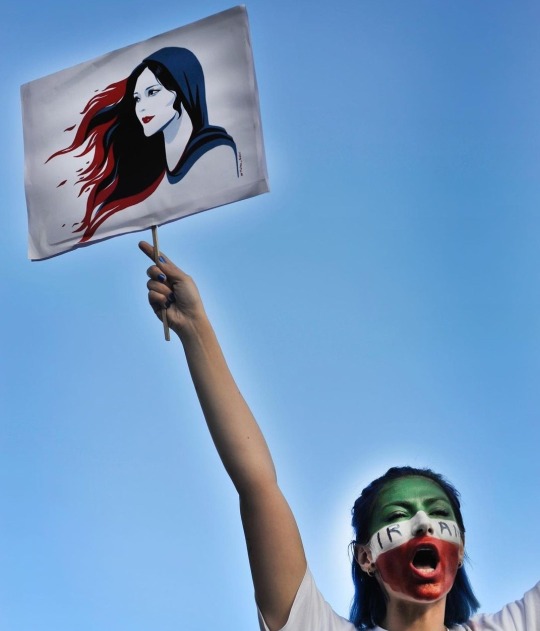
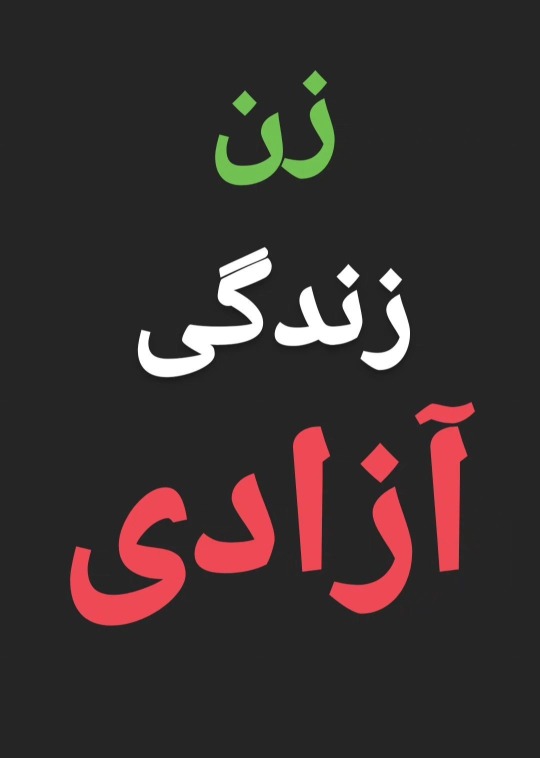
Woman life freedom
#iran#mahsa amini#iran protests#human rights#iran revolution#women's rights#middle east#politics#woman life freedom
1K notes
·
View notes
Text
Rights groups have claimed that Iranian authorities arrested Mahsa Amini’s father and prevented her family from holding a vigil to commemorate the first anniversary of her death.
A report on Saturday in the official IRNA news agency said Amjad Amini had not been arrested. Later in the day, the agency said security forces had foiled an assassination attempt against Amini.
The 1500tasvir monitor, the Iran Human Rights (IHR) group and the Kurdistan Human Rights Network (KHRN) said Amjad Amini had been arrested early on Saturday in Saqez in western Iran and released after being warned not to hold a memorial service at his daughter’s graveside.
The death of Mahsa Amini, a 22-year-old Kurdish woman arrested by Iranian morality police last year for not adhering to mandatory dress codes, led to months of some of the biggest protests against clerical rule ever seen in Iran.
More than 500 people, including 71 minors, were killed in the protests, while hundreds were wounded and thousands arrested, rights groups said. Iran executed seven people linked to the unrest.
Protests, international attention
As night fell on Saturday, a heavy security presence in Iran’s main cities and in mostly Kurdish areas appeared to have deterred large-scale protest rallies but human rights groups reported sporadic confrontations in several areas of the country.
Videos posted on social media showed people gathered on a main avenue in the capital Tehran cheering a young protesting couple as drivers honked their car horns in support.
One of Iran’s most high-profile prisoners, prize-winning rights activist Narges Mohammadi and three other women detainees burned their headscarves in the courtyard of Tehran’s Evin prison to mark the anniversary, according to a post on Mohammadi’s Instagram.
Outside Tehran, at the Qarchak prison for women, rights groups said a fire broke out when security forces quelled a protest by inmates. The Kurdistan Human Rights Network said special forces beat up women in the prison and fired pellet bullets. IRNA reported that a fire engulfed the women’s ward in Qarchak after convicts awaiting execution set fire to their clothes. It said the blaze was put out and there were no casualties.
Protests were also reported in the city of Karaj, west of Tehran, and in Mashhad, northeast of the capital. One video posted on social media showed a group of demonstrators in the Karaj neighbourhood of Gohardasht chanting, “We are a great nation, and will take back Iran”, while drivers honked their horns and shouted encouragement.
In the Kurdish city of Mahabad, rights group Hengaw said security forces opened fire, wounding at least one person. It also said several people were wounded in the city of Kermanshah but there was no official confirmation of either incident.
In Amini’s home town, the semi-official Fars news agency reported that police using a pellet gun had seriously wounded a man who “ignored a warning”. It said the man was in an intensive care ward after undergoing an operation, but provided no more detail.
Hengaw identified the man as Fardin Jafari and said he had been shot in the head near the cemetery where Amini is buried.
Al Jazeera could not verify the report.
Hengaw also reported a widespread general strike in Kurdish areas on Saturday, circulating video and photos that appeared to show streets largely empty and shops shuttered. Human Rights Activists in Iran, another group that closely follows events in the country, also reported the general strike.
But state media dismissed the reports, with IRNA saying Saqez was “completely quiet” and that calls for strikes in Kurdish areas had failed due to “people’s vigilance and the presence of security and military forces”.
The agency quoted an official in the Kurdistan province as saying: “A number of agents affiliated with counter-revolutionary groups who had planned to create chaos and prepare media fodder were arrested in the early hours of this morning.”
Iran’s Revolutionary Guard, meanwhile, arrested a dual national suspected of “trying to organise unrest and sabotage”, according to IRNA, one of several arrests of “counter revolutionaries” and “terrorists” reported.
Demonstrations and vigils were also held outside Iran, with protesters gathering in Sydney, Paris, London, Rome, Toronto, New York and Washington, DC, to commemorate Amini’s death.
Paris Mayor Anne Hidalgo announced that a garden in the French capital now carried Amini’s name. The mayor called Amini an Iranian resistance hero and said Paris “honours her memory and her battle, as well as those of women who fight for their freedom in Iran and elsewhere”.
The Villemin Garden that now also bears Amini’s name is in Paris’s 10th district, next to a canal with popular boat tours.
In Washington, DC, the capital of the United States, hundreds of protesters gathered in a park across from the White House holding portraits of Amini. Speakers led the crowd in chants of “Say her name … Mahsa Amini”, and recited, “We are the revolution”, as well as, “Human rights for Iran!”
In a statement on Friday, US President Joe Biden said, “Mahsa’s story did not end with her brutal death. She inspired a historic movement – Woman, Life, Freedom – that has impacted Iran and influenced people across the globe.”
The US, meanwhile, announced sanctions on more than two dozen individuals and entities connected to Iran’s “violent suppression” of protests, while the United Kingdom imposed sanctions on four Iranian officials.
Iran has blamed last year’s protests on the US and other foreign powers, without providing evidence, and has since tried to downplay the unrest even as it moves to prevent any resurgence.
In a report last month, Amnesty International said Iranian authorities “have been subjecting victims’ families to arbitrary arrest and detention, imposing cruel restrictions on peaceful gatherings at grave sites, and destroying victims’ gravestones”.
Many journalists, lawyers, activists, students, academics, artists, public figures and members of ethnic minorities accused of links with the protest wave, as well as relatives of protesters killed in the unrest, have been arrested, summoned, threatened or fired from jobs in the past few weeks, according to Iranian and Western human rights groups.
Iran’s Etemad daily reported in August that the lawyer for Amini’s family also faced charges of “propaganda against the system”.
If convicted, Saleh Nikbakht faces a jail sentence of between one and three years.
3 notes
·
View notes
Text
Today in saqez someone got shot in the head .
1 note
·
View note
Link
0 notes
Text
"Unveiling the Unthinkable: Iran's Forces Detain Mahsa Amini's Father on Her Grievous Anniversary!"
Mahsa Amini’s Father Detained by Iranian Authorities on Anniversary of Daughter’s Death On the first anniversary of Mahsa Amini’s death in Iranian police custody, her father, Amjad Amini, was briefly detained on Saturday, according to human rights groups. The incident occurred amidst a heavy presence of security forces, who were positioned around Amini’s home in Saqez, western Iran. According to…
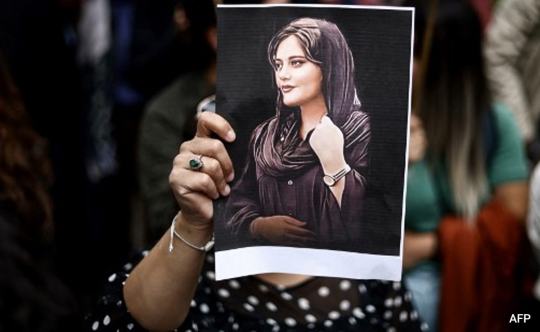
View On WordPress
0 notes
Text
"Unveiling the Unthinkable: Iran's Forces Detain Mahsa Amini's Father on Her Grievous Anniversary!"
Mahsa Amini’s Father Detained by Iranian Authorities on Anniversary of Daughter’s Death On the first anniversary of Mahsa Amini’s death in Iranian police custody, her father, Amjad Amini, was briefly detained on Saturday, according to human rights groups. The incident occurred amidst a heavy presence of security forces, who were positioned around Amini’s home in Saqez, western Iran. According to…

View On WordPress
0 notes
Text
"Unveiling the Unthinkable: Iran's Forces Detain Mahsa Amini's Father on Her Grievous Anniversary!"
Mahsa Amini’s Father Detained by Iranian Authorities on Anniversary of Daughter’s Death On the first anniversary of Mahsa Amini’s death in Iranian police custody, her father, Amjad Amini, was briefly detained on Saturday, according to human rights groups. The incident occurred amidst a heavy presence of security forces, who were positioned around Amini’s home in Saqez, western Iran. According to…

View On WordPress
0 notes
Text
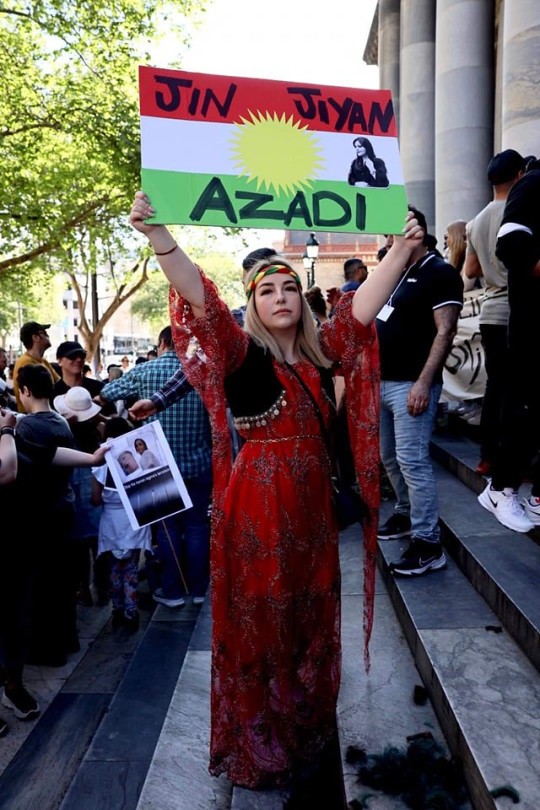
#IFTTT#Flickr#آذربایجان#مهساامینی#قیامسراسری#oplran#kurdistanprotests#kurdistan#انقلاب۱۴۰۱#زنزندگیآزادی#mahsaamini#womanlifefreedom#iranrevolution#zahedan#ژینائەمینی#ژنژیانئازادی#saqez#jinaamini#jinjiyanazadi#ژیناامینی#ژینائاشووریکوردستان#iranprotests#اعتصاباتسراسری#اعتراضاتسراسری#janjeyanazadi#iranrevolution2022#سنندج#ژینایکوردستان#زنداناوین#jinarevolt
5 notes
·
View notes
Text
“FREEDOM”
Photo of a woman standing on a car with her hands in the air as masses of cars and people head toward the horizon was taken forty days after Mahsa Jina Amini was killed. The word FREEDOM, where the woman forms the Alef, is superimposed in yellow.
An estimated ten thousand people attempted to gather to mourn in Saqez, a city in the Kurdistan province where Amini is buried. Protests also erupted across the country, numbering in the tens of thousands.
Forty days following the death of a family member or friend is a traditional day of mourning in Iran. More about traditional funerary and mourning customs.

12 notes
·
View notes
Photo
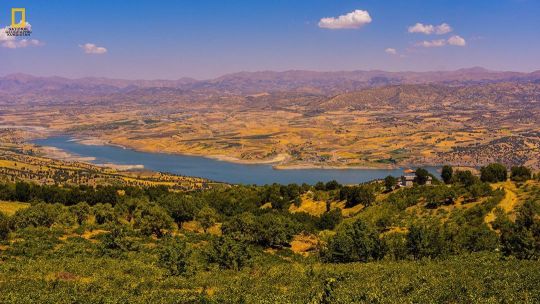
خۆزگە جەنگەڵ بووبای وەتەن کە تۆفان لە جەنگەڵدا هەڵگیرسا هیچ درەختێک تەنها نییە پشتی هەر درەختێک درەختێکی ترە لە جەنگەڵ درەختەکان بە پێوە ئەمرن شان بەشانی یەکترەوە خۆزگە جەنگەڵ بووبای وەتەن دەشتی سیرە مێرگ، سەردەشت، پارێزگای ورمێ Sira Merg Plain, Sardasht, Urmia Province ________________________________ تا ژینگە پارێز نەبی، ناتوانی وڵات پارێز بی... ________________________________ 📸By: @3a7ark 🔺🔺 🔺 ➖➖➖➖➖➖➖➖➖➖ ➖➖ ➖ 🔻🔻 🔻 #kurdistan_is_a_region_full_of_beauty #کوردستان_پر_لە_جوانی #kurd #kurdistan #urmia #sardasht #کورد #کوردستان #ارومیه #سەردەشت #سردشت #sena #kermashan #ilam #baneh #mariwan #mahabad #oshnaviyeh #bukan #saqez #piranshahr #paveh #kamyaran #bijar #miandoab #کرماشان #سنە #ایلام #سنندج #بانە 🔶🔶🔶 (at Sardasht) https://www.instagram.com/p/CEWBy8rgwxO/?igshid=1jjizpmvgnkyb
#kurdistan_is_a_region_full_of_beauty#کوردستان_پر_لە_جوانی#kurd#kurdistan#urmia#sardasht#کورد#کوردستان#ارومیه#سەردەشت#سردشت#sena#kermashan#ilam#baneh#mariwan#mahabad#oshnaviyeh#bukan#saqez#piranshahr#paveh#kamyaran#bijar#miandoab#کرماشان#سنە#ایلام#سنندج#بانە
0 notes
Text
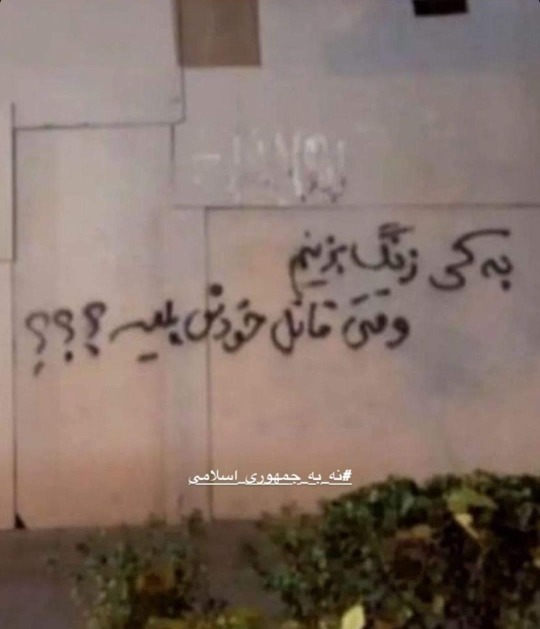
"Who do we call when the police murders?
به کی زنگ بزنیم وقتی قاتل خودش پلیسه؟
Graffiti seen in Iran during the ongoing protests following the death of Mahsa Amini, a 22yr old woman who fell into a coma after being beaten in police custody.
Ms Amini, an ethnic Kurd who was from the western city of Saqez in Kurdistan province, died in hospital on Friday after spending three days in a coma.
She was detained outside a metro station in Tehran last Tuesday by morality police. They accused her of breaking the law requiring women to cover their hair with a headscarf, and their arms and legs with loose clothing.
According to witnesses, she was beaten while inside a police van that took her to a detention centre.
Protests erupted in Saqez after her funeral on Saturday, with security forces reportedly opening fire on a crowd that marched towards the local governor's office.
There were also clashes between protesters and riot police in Sanandaj, Kurdistan's capital, on Saturday and Sunday.
Four people were reportedly killed in Iran's Kurdish region on Monday when security forces opened fire during protests over the death, a Kurdish rights group said.
Her death has been condemned nationwide, with the Persian hashtag reaching nearly 2 million Twitter mentions.
The most intense demonstrations have been in Iranian Kurdistan, where authorities have previously put down unrest among minority Kurds.
830 notes
·
View notes
Text
Mahsa Amini: Women take headscarves off in protest at funeral - BBC News
Mahsa Amini, 22, died on Friday, days after eyewitnesses said she was beaten in a police van in Tehran - allegations denied by police.
Some women at the ceremony reportedly removed their headscarves in protest at the compulsory wearing of hijabs.
Mourners chanted "death to the dictator", with videos showing police later firing on a crowd.
The funeral took place in Ms Amini's hometown, Saqez, in the western province of Kurdistan.
According to videos published on social media, locals gathered very early in the morning to prevent Iranian security forces rushing through the burial in secret to avoid protests.
Reports suggested that some angry protesters marched toward the local governor's office to protest about the death. According to videos received and verified by the BBC Persian Service, the security forces opened fire on protesters.
163 notes
·
View notes
Text
The UN has expressed alarm at Iranian authorities' response to protests sparked by the death in custody of a woman detained for breaking hijab laws.
Human rights groups said three people were killed on Monday as security forces opened fire at men, women and children who took to the streets of Kurdistan province for a fourth day.
Protests also took place in Tehran.
The UN urged Iran's leaders to allow peaceful demonstrations and launch an impartial probe into the woman's death.
Mahsa Amini, a 22-year-old from the western city of Saqez, who was from Iran's Kurdish minority, died in hospital on Friday after spending three days in a coma.
She was with her brother in Tehran on Tuesday when she was arrested by Iran's morality police, who accused her of breaking the law requiring women to cover their hair with a hijab, or headscarf, and their arms and legs with loose clothing. She fell into a coma shortly after collapsing at a detention centre.
Acting UN High Commissioner for Human Rights Nada al-Nashif said there were reports that Ms Amini was beaten on the head with a baton by morality police officers and that her head was banged against one of their vehicles.
The police have denied that she was mistreated and said she suffered "sudden heart failure". But her family has said she was fit and healthy.
"Mahsa Amini's tragic death and allegations of torture and ill-treatment must be promptly, impartially and effectively investigated by an independent competent authority, that ensures, in particular, that her family has access to justice and truth," Ms Nashif said.
She noted that the UN had received "numerous, and verified, videos of violent treatment of women" as morality police expanded their street patrols in recent months to crack down on those perceived to be wearing "loose hijab".
"The authorities must stop targeting, harassing, and detaining women who do not abide by the hijab rules," she added, calling for their repeal.
An aide to Iran's Supreme Leader Ayatollah Ali Khamenei paid a visit to Ms Amini's family on Monday and told them that "all institutions will take action to defend the rights that were violated", state media reported.
Senior MP Jalal Rashidi Koochi publicly criticised the morality police, saying the force was a "mistake" as it had only produced "loss and damage" for Iran.
What are Iran's hijab laws?
Following the 1979 Islamic Revolution, authorities in Iran imposed a mandatory dress code requiring all women to wear a headscarf and loose-fitting clothing that disguises their figures in public.
Morality police - known formally as "Gasht-e Ershad" (Guidance Patrols) - are tasked, among other things, with ensuring women conform with the authorities' interpretation of "proper" clothing. Officers have the power to stop women and assess whether they are showing too much hair; their trousers and overcoats are too short or close-fitting; or they are wearing too much make-up. Punishments for violating the rules include a fine, prison or flogging.
In 2014, Iranian women began sharing photos and videos of themselves publicly flouting the hijab laws as part of an online protest campaign called "My Stealthy Freedom". It has since inspired other movements, including "White Wednesdays" and "Girls of Revolution Street".

Ms Nashif also condemned "the reported unnecessary or disproportionate use of force" against the thousands of people who have taken in part in protests against the morality police and the hijab since Mahsa Amini's death.
Hengaw, a Norway-based organisation that monitors human rights in predominantly Kurdish areas, said 38 people were injured on Saturday and Sunday when riot police fired live ammunition, rubber bullets and tear gas at protests in Saqez and Sanandaj, the capital of Iran's Kurdistan province.
The group reported that three male protesters were shot and killed in clashes with security forces on Monday - one in Saqez and two others in the towns of Divandarreh and Dehgolan - as the unrest escalated. It had previously reported the death of a second man in Divandarreh, but relatives said he was in a critical condition in hospital.
In Tehran, videos posted online showed protests on Monday outside several universities and on Keshavarz Boulevard, a major road in the city centre.
Women were filmed taking off their headscarves and shouting "death to the dictator" - a chant often used in reference to the Supreme Leader. Others shouted "justice, liberty, no to mandatory hijab".
A woman who took part in a protest on Monday night in the northern city of Rasht sent BBC Persian photographs of what she said were bruises she suffered as a result of being beaten by riot police with batons and hoses.
"When we took to the streets to show our solidarity and anger the only thing they [the police] did was beat us," she said.
"They kept firing tear gas. Our eyes were burning," she added. "We were running away, [but] they cornered me and beat me. They were calling me a prostitute and saying I was out in the street to sell myself!"
Another woman who protested in the central city of Isfahan told the BBC's Ali Hamedani: "While we were waving our headscarves in the sky I felt so emotional to be surrounded and protected by other men. It feels great to see this unity. I hope the world supports us."
Tehran Governor Mohsen Mansouri tweeted on Tuesday that the protests were "fully organised with the agenda to create unrest", while state TV alleged that Ms Amini's death was being used as an "excuse" by Kurdish separatists and critics of the establishment.
#nunyas news#un will do the same thing they do to protect#lgbt people in places like this#absolutely nothing
109 notes
·
View notes
Text
While Iranian security forces say Amini died of a heart attack and was never mistreated, CNN reported that her father, Amjad Amini, has accused officials of lying about her death and refusing to allow him to see her body or her autopsy report. Amini, a Kurdish woman from the northwestern city of Saqez, died in a Tehran hospital.
Amjad told BBC Persian that Mahsa’s 17-year-old brother was with her when she was detained, and that witnesses told the sibling she had been beaten. “My son begged them not to take her, but he was beaten too, his clothes were ripped off,” Amjad said, adding, “I asked them to show me the body-cameras of the security officers, they told me the cameras were out of battery."
71 notes
·
View notes
Text
Protestors came out across Iran on Saturday as anti-government demonstrations enter their fourth week.
Footage shared online showed Iranians on the streets in several towns and cities chanting anti-government slogans and blocking roads, with security forces engaging in violent clashes with protestors.
Unrest in Iran was sparked by the death of 22-year-old Mahsa Amini on 16 September after her arrest by the country's moral police for allegedly not wearing her headscarf properly.
Protests have been reported on Saturday in many of Iran's major cities, such as Tehran, Karaj, Isfahan, Mashhad, Qazvin, Kermanshah and Shiraz, among others, according to AFP and IranWire.
"We are no longer afraid. We will fight," read a large banner that was placed on an overpass of a motorway that crosses the Iranian capital, Tehran.
Meanwhile, several strikes took place in Kurdish cities in western Iran, alongside Mahabad in West Azerbaijan, with reports of security services shooting at protestors in the city of Sanandaj.
Schoolgirls in Saqez -- Amini's hometown -- took off their hijabs (headscarves) and waved them around, shouting "women, life, freedom" on Saturday, the start of Iran's academic year.
University students across Iran also refused to go to class and joined protestors on the streets, according to IranWire.
Tear gas was used to disperse demonstrators near Sharif University in Tehran, which was violently besieged by security forces this week.
Demonstrations over Amini's death have morphed into a wider challenge to Iran's Islamic government, which is deeply unpopular among large sections of society.
Leaked medical evidence shows that Amini suffered several violent blows to the head while in police custody, while Iranian authorities claim she had a "sudden heart attack".
There is widespread popular anger over many of the government's Islam-inspired policies, such as compulsory hijab for women, a faltering economy hit hard by sanctions, and the violent response to protestors.
At least 154 people, including children, have been killed since nationwide protests began, according to Iran Human Rights (IHRNGO), though the figure is likely to be much higher as many deaths go unreported.
Thousands have been detained.
IHRNGO Director Mahmood Amiry-Moghaddam claimed last week that the killing of protestors in Iran "amounts to a crime against humanity", urging the international community to "prevent further crimes".
On Friday, fountains in Tehran were filled with red paint by an unknown artist to symbolise the blood that has been spilt in Iran.

The authorities' response has intensified since the beginning of the protests in September, cutting off the internet and mobile data for long periods at a time.
There have been repeated reports of security forces using live ammunition and shotguns against demonstrators, besides rubber bullets and batons.
Ultra-conservative President Ebrahim Raisi has blamed the unrest on outside forces, notably the United States, while several officials have called on the security services to stop the protests.
At a Saturday press conference, Raisi said students would not serve the interests of "the enemy", in reference to the US which is often referred to as the "great Satan" by Iran's government.
"The enemy thought they could achieve their goals in the universities, ignoring the fact that our students and professors are vigilant and will not allow the enemy's false dreams to come true," he said.
Waves of anti-government protests have broken out in Iran in recent years.
In 2019, there were mass demonstrations after the government hiked the price of gas. Hundreds were reportedly killed in the clashes that followed.
36 notes
·
View notes